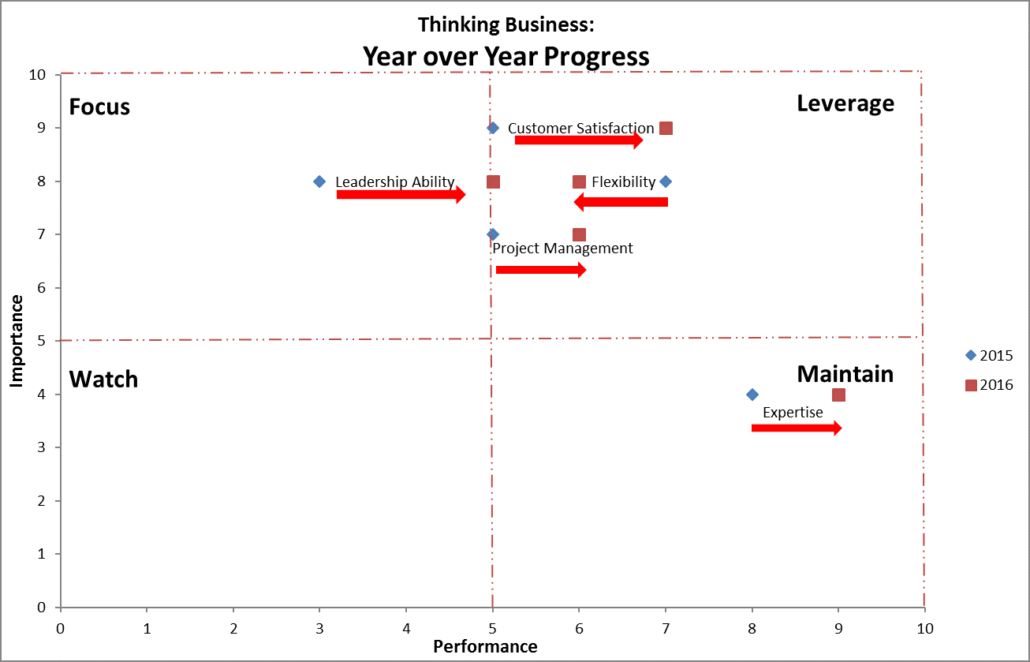“The competitor to be feared is the one who never bothers about you at all, but goes on making his own business better all the time.” Henry Ford

I find it very interesting that about 100 years ago Henry Ford, the inventor of the mass production factory, understood that focusing on your competition added no value to your business. In fact, he knew that focusing on your competition takes your focus off your own business. Focusing on the competition causes you to chase others rather than leading your organization towards achieving your goals, mission and vision.
So if Mr. Ford identified the secret about what to focus on as a business leader 100 years ago, why are so many business leaders today so concerned about what their competition is doing?
How much money is spent by businesses every year hiring consultants to study the market to determine;
- where their business rates versus the competition
- how many basis points they gained or lost since the last study was done
- how much money they need to spend to steal 2% market share from their competitors
Ford understood that none of this really matters. What really counts is that you focus on your business and achieving your goals, mission and vision. Focus on making your organization, people, products and services better rather than trying to determine where you rank in the marketplace.
Why not spend your dollars on developing your staff so that they can take your business to the next level in the marketplace. Or perhaps spend your consultant budget to solicit customer feedback regarding your product or service. Now this is valuable! Customer feedback is something that you could use to leapfrog your business forward.
Why not take this priceless feedback from your customers and use it as a baseline to determine where you need to improve as a business. You can compare this data year over year to see if you are improving in the eyes of your customers. Build a simple graph like the one sketched out below to track the year over year change;
To get this process started:
- Identify a few areas where you want customer feedback. The topics selected will vary greatly between businesses. The example above shows; Expertise, Project Management, Leadership Ability, Customer Satisfaction and Flexibility.
- Have your customers rate the importance of each of these factors (y-axis) and then your performance in these areas (x-axis). Plot these points on the graph for the current year.
- Divide the graph into four quadrants.
- The lower left quadrant shows an area of lower importance to the customer but also lower performance by your company. Factors in this quadrant are a potential concern. These factors should be watched to ensure your performance does not slip any further.
- The upper left quadrant shows an area of high importance to the customer but low performance by your company. These are factors that you should focus on improving as much as possible.
- The lower right quadrant shows factors that are low importance to the customer but high performance by your company. These factors should be maintained where they are. You do these things well and, although the customers think they are not important, they are probably familiar with a certain level of service here so to degrade these could be detrimental.
- The upper right quadrant shows factors that are high importance to the customer and high performance by your company. These factors should be leveraged and developed even further. This will provide an even greater competitive advantage for your company.
Once you get this process in place and data for the current year, be sure to continue this process in the future so that you can map the movement in how your customers rate your business. This is one tool that will keep you focused on making your business better rather than being concerned about what your competitors are up to. Focus on making your business better so you can become the “competitor to be feared!”
Download the Importance/Performance Excel graph template from the Business Tools page.
“Even in the face of massive competition, don’t think about the competition. Literally, don’t think about them. Every time you’re in a meeting and you’re tempted to talk about a competitor, replace that thought with one about user feedback or surveys. Just think about the customer.” Mike McCue


Please note: I reserve the right to delete comments that are offensive or off-topic.